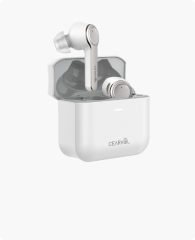Unilateral hearing loss affects hearing in only one ear, impacting depth perception, sound localization, and overall hearing clarity. This blog will explore unilateral hearing loss from its definition and symptoms to its causes, treatment options, and more.
🚀 Navigate This Post
- ➤ Part 1: What is Unilateral Hearing Loss?
- ➤ Part 2: Symptoms of Unilateral Hearing Loss
- ➤ Part 3: Unilateral vs. Bilateral Hearing Loss
- ➤ Part 4: Causes of Unilateral Hearing Loss
- ➤ Part 5: Unilateral Hearing Loss and Tinnitus
- ➤ Part 6: Is Unilateral Hearing Loss a Disability?
- ➤ Part 7: Treatment Options for Unilateral Hearing Loss
- ➤ Part 8: Maintaining Hearing Health
- ➤ Part 9: Choosing the Right Hearing Aid
- ➤ Part 10: FAQs on Unilateral Hearing Loss
You may also be interested in:
- Hearing Issues: Sensorineural Hearing Loss
- Hearing Issues: Conductive Hearing Loss
- Comprehensive Guide: Everything You Need to Know about Hearing Aids
Part 1: What is Unilateral Hearing Loss?
Unilateral hearing loss occurs when hearing is impaired in one ear while the other ear functions normally. This differs from bilateral hearing loss, which affects both ears. With unilateral loss, daily activities can become challenging as the brain depends on inputs from both ears to locate sounds, separate speech from background noise, and maintain balance.
In some cases, unilateral hearing loss is accompanied by tinnitus—a constant ringing or buzzing in the affected ear.
Part 2: Symptoms of Unilateral Hearing Loss
Unilateral hearing loss symptoms can significantly affect communication and auditory processing. Common symptoms include:

- Difficulty localizing sounds: With only one functioning ear, it's hard to gauge where sounds originate.
- Challenges in noisy environments: Background noise becomes harder to filter out, especially in crowded areas or social gatherings.
- Increased need for volume: People with unilateral hearing loss may find themselves raising the volume on phones or other devices to better understand sounds on their affected side.
- Possible tinnitus: Many individuals experience a persistent ringing or buzzing in the impaired ear, known as unilateral tinnitus, which can add to communication difficulties.
Part 3: Unilateral vs. Bilateral Hearing Loss
Here's how unilateral hearing loss differs from bilateral hearing loss:
- Unilateral Hearing Loss: Impacts only one ear, which can make sound localization and noise filtering challenging. Often results from specific causes like trauma or infections that affect just one ear.
- Bilateral Hearing Loss: Involves both ears and often results from aging, prolonged noise exposure, or genetic factors. Individuals with bilateral loss may experience reduced clarity and volume across all sounds.
Part 4: Causes of Unilateral Hearing Loss
The causes of unilateral hearing loss can range from sudden events to chronic conditions. Below are common causes:
- Sudden Sensorineural Hearing Loss (SSNHL): This rapid-onset hearing loss in one ear is often due to viral infections, blood flow issues, or autoimmune responses. Immediate medical attention is essential, as early treatment with corticosteroids can sometimes reverse the damage.
- Acoustic Neuroma: A benign tumor on the auditory nerve, causing gradual unilateral hearing loss along with symptoms like dizziness or balance issues.
- Meniere's Disease: This inner ear disorder is associated with vertigo, tinnitus, and fluctuating hearing loss, typically affecting one ear.
- Ear Infections and Trauma: Repeated ear infections, severe head injuries, or sudden pressure changes can damage inner ear structures, leading to one-sided hearing impairment.
Understanding these causes can guide early intervention and appropriate treatment.
Part 5: Unilateral Hearing Loss and Tinnitus
Unilateral hearing loss is often accompanied by unilateral tinnitus, a constant ringing or buzzing in the affected ear. While some individuals experience unilateral tinnitus without hearing loss, it's often linked to other auditory conditions.
To learn more about tinnitus and hearing loss, visit our detailed guide on tinnitus and hearing loss.
Part 6: Is Unilateral Hearing Loss a Disability?

Part 7: Treatment Options for Unilateral Hearing Loss
Treatment for unilateral hearing loss depends on the underlying cause and severity. Here are some common approaches:
- Hearing Aids: Specialized hearing aids, such as wireless Bluetooth hearing aids, can amplify sound in the impaired ear, improving clarity and sound balance. Modern models offer features like Bluetooth connectivity and noise cancellation.
- Medication: Corticosteroids may help reduce inflammation in cases of sudden hearing loss, offering partial or full recovery in some cases.
- Surgery: For structural issues like tumors or ear abnormalities, surgery may be needed to remove obstructions or relieve pressure on the auditory nerve.
- Sound Therapy: For those with tinnitus, sound therapy or tinnitus retraining therapy (TRT) can help alleviate symptoms.

Diamond X1 - Best Hearing Aids with Bluetooth
Newcomer Price
$249.99 $309.99
- ✔ Adaptive sound modes for clear hearing.
- ✔ Bluetooth for calls & streaming.
- ✔ App-controlled, customizable adjustments.
- ✔ Rechargeable & fast charging.
- ✔ Ideal for mild to moderate hearing loss.
Part 8: Maintaining Hearing Health
Protecting your hearing is essential to prevent unilateral hearing loss. Here are some tips:
- Limit exposure to loud noises: Frequent exposure to loud sounds increases the risk of hearing damage.
- Regular check-ups: Hearing tests help detect early signs of hearing loss.
- Proper care of hearing aids: Clean your hearing aids regularly to ensure they work effectively. For tips on maintenance, read our guide on clean hearing aids.
Part 9: Choosing the Right Hearing Aid
Selecting a quality hearing aid can make a significant difference for those with unilateral hearing loss. Cearvol offers advanced hearing aids with Bluetooth and noise-filtering features, perfect for modern, active lifestyles. To find a model that suits your needs, visit the Cearvol page for more details.








Leave a comment
All comments are moderated before being published.
This site is protected by hCaptcha and the hCaptcha Privacy Policy and Terms of Service apply.